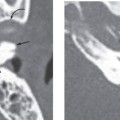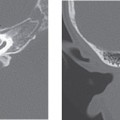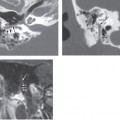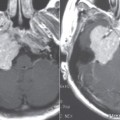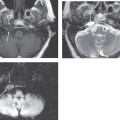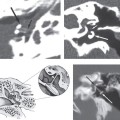CHAPTER 57 Superior Semicircular Canal Dehiscence
Epidemiology
Superior semicircular canal (SSCC) dehiscence is the absence of the bony roof of the superior semicircular canal that normally forms the arcuate eminence of the temporal bone (Fig. 57-1). The disorder appears to be more common in men (2:1) with a mean age of 42 years. Unilateral involvement is more common, with ~20% patients having bilateral dehiscence of the SSCC.
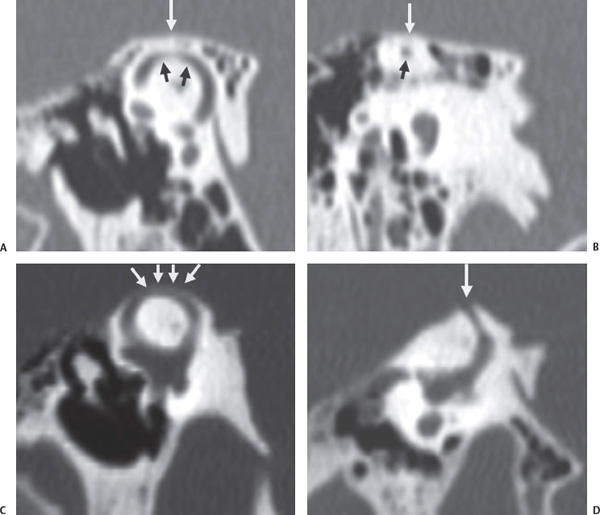
Figure 57-1 Multiplanar reformations obtained en face (A) and orthogonal (B) to the plane of the superior semicircular canal demonstrates the normal appearance of the canal (short arrows) and the bony covering comprising the roof (long arrows). (C,D) Absence of the bony roof (arrows) indicating dehiscence of the canal.
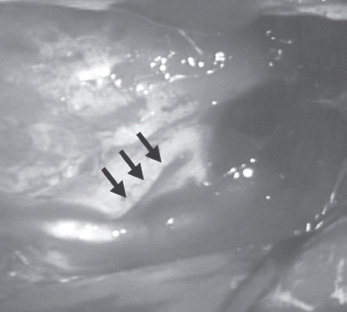
Figure 57-2 Intraoperative photo shows the appearance of a dehiscent superior semicircular canal. Note the linear bony defect in the bone (arrows) represents the lumen of the superior semicircular canal, which is visualized due to the roof being absent. (Courtesy of Steve Telian, MD.)
Clinical Features
Stay updated, free articles. Join our Telegram channel

Full access? Get Clinical Tree


